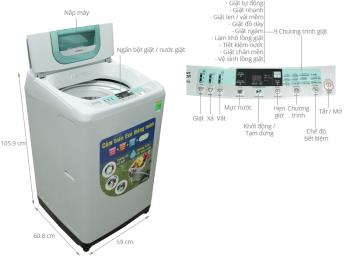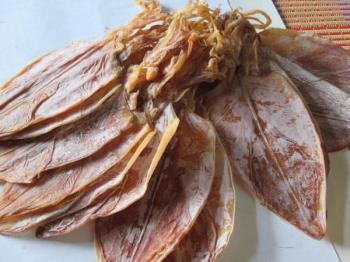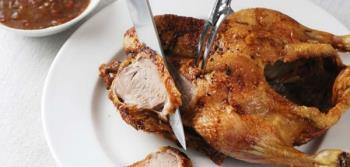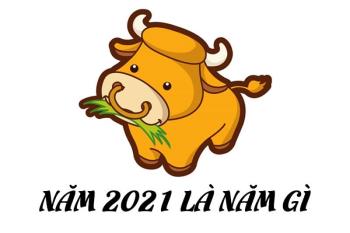Hair Bob 2020 Summer: 80 beautiful trendy cuts

2020 summer bob haircuts most beautiful and trendy worn by the stars and proposed by famous hairdressers. Lots of images and ideas to inspire you!
How long expressed breastmilk can be warmed is a question or concern of many women, especially for first-time mothers. Let's refer to some basic knowledge about breast milk preservation so that women have enough information to prepare for a breastfeeding journey.
The World Health Organization (WHO) has recommended exclusive breastfeeding for the first 6 months of life and alternating breastfeeding with other foods until 24 months of age. Breast milk is a source of food to support the optimal physical as well as brain of the newborn.
Breast milk reduces the risk of asthma, obesity, sudden infant death syndrome (SIDS), gastrointestinal problems, ear infections and pneumonia. Breastfeeding contributes to stimulating the baby's digestive system, preventing the baby's body from becoming infected with bacteria and increasing the baby's resistance to allergies.
Breast milk contains many valuable nutrients including protein protein, lipid fats, carbohydrates, many vitamins and mineral salts.
Not only is it beneficial for the baby, but breastfeeding also has a positive effect on the mother's body, namely helping to restore the uterus, stop bleeding after giving birth, limit congestion, abscesses or breast cancer, and ovaries as well as type 2 diabetes.
For the reasons listed above, an infant should be exclusively breastfed for the first 6 months of life. However, how hygienically and properly warm breastmilk is preserved and warmed is a problem for many mothers because if not done correctly, breastmilk can completely spoil and adversely affect. to baby.
If the temperature is between 19 and 26 degrees C: up to 4 hours.
Temperatures above 26 degrees C: Milk can only be stored for 1 hour.
In the cooler compartment temperatures, milk can be used up to 2 days.
For fridge freezer temperatures, breastmilk can be stored for up to 4 months.
When using a dedicated freezer, milk storage time can be extended to 6 months.
The ideal milk temperature to stimulate the baby's taste and digestive system is about 37 degrees Celsius. Once stored, breastmilk should be thawed and warmed at 40 degrees Celsius.
Many young mothers mistakenly believe that if the temperature is maintained at 40 degrees Celsius, the milk will not affect the quality. However, in reality, mothers can only warm milk 1 time to feed their babies within 1 hour after incubation. Absolutely do not continue to give milk after this time or put in the refrigerator after reheating.
Advice for young mothers is to estimate each meal of the baby and take the appropriate amount of milk (divided into small bags of about 60-120 ml of milk for each meal) to thaw, avoid wasting breast milk. .
Hot incubation with thermos flask, incubation bag. These tools are not effective at keeping heat, so mothers should only store milk for a short time. Mother should not express milk directly into the thermos bottle, but use sterile hot water before adding milk and then cover tightly.
Heat by machine. The bottle warmer is designed quite simply to keep the milk warm for a certain period of time. This machine can also be used to heat milk that has been frozen in the refrigerator. Currently on the market there are many types of milk heaters of many brands with diverse models and prices, please refer to before choosing to buy.
The simplest way to heat breastmilk is to use hot water: the mother expresses the milk in a bottle, then closes it and places it in a bowl / cup / cup of warm water at a temperature of about 40 degrees Celsius. Although very simple, the drawback is limited The method of this method is that you have to change the warm water continuously if you want to keep a certain temperature.
Many women make the mistake of boiling or brewing milk too hot (over 70 degrees). Breast milk, if boiled, will evaporate many nutrients and vitamins. Hot incubation of 70 degrees C means that the milk will have no nutritional value .
Milk when incubated at 50 to below 70 degrees C, although not lost nutrition but can cause burns for children when used and completely unnecessary.
The ideal temperature to keep your baby warm is about 40 degrees.
In addition to knowing how long breastmilk can be heated to incubate, mothers also need to pay attention to signs of spoiled milk in order to prevent children from using it in time.
Normal breast milk will have a light sweet taste, not too salty or too sweet, with a characteristic aroma and fatty taste. It may be the case that the milk, after thawing, turns yellow and appears greasy. Do not use a scoop to remove the whey because this part contains many essential nutrients for your baby. This fat fraction, if dissolved when well shaken, can still be used. Conversely, if the fat floating on the surface is insoluble, the milk is likely spoiled, the mother should not let the baby drink.
In addition, breastmilk kept in the refrigerator can also develop a strange smell like the smell of soap. This is due to the action of lipase enzyme in milk that breaks down fatty acids in the scum layer. This is not a sign that breastmilk is spoiled and that it is completely safe to breastfeed.
In spoiled breast milk, the milk has a sour odor and is fermented with lumps and insoluble scum. You can also taste the taste of milk if you are more careful. Besides, if the milk has no signs of spoilage but it is over time to preserve, mothers should not regret it but let the baby use it.
The above article has partly answered the questions about how long breast milk can be brewed and warmed for many women, especially the first time mothers are surprised. Mother please read and save the necessary information. Wish moms have enough milk to feed their babies safely and healthy.
see more
Do you know how much breastfed babies are required?
Review top powdered milk products good for babies 0-6 months
Morinaga and Japanese Milk - Compare and Review!
2020 summer bob haircuts most beautiful and trendy worn by the stars and proposed by famous hairdressers. Lots of images and ideas to inspire you!
Many hairstyles for straight hair to be copied and the tutorials to learn how to make them in a few simple steps. Here are the most beautiful hairstyles.
Does eating durian while breastfeeding affect breast milk taste or cause digestive issues? Find out whether nursing mothers should eat durian.
Learn how to replicate Renée Zellweger’s beautiful makeup from the BAFTAs, featuring useful tips and a list of products for an elegant and luminous look.
Discover the best washing machine brands such as Hitachi, Candy, Midea, Beko, and Whirlpool with our detailed reviews. WebTech360 helps you choose the best washing machine that suits your needs.
Available in the Vietnamese market since 2001, Darling TV is gradually becoming familiar to users. Discover if Darling TV is good and durable, alongside the top 3 models worth buying.
Deciding whether to buy a Hitachi or Samsung refrigerator is challenging, as both brands are synonymous with quality and luxury.
Discover how to effectively use the Toshiba AW-A800SV washing machine control panel with our detailed guide!
WebTech360 provides simple steps for updating software on your Toshiba Smart TV to enhance performance and access new features.
Are longans harmful for pregnant women? Discover safe consumption practices for longan during pregnancy and the potential risks involved.
Discover the trendy men
Learn how to use Skype on your Smart TV TCL for seamless communication. This guide covers installation, login, camera connection, and more.
Learn how to bookmark websites on your Skyworth Smart TV for easy access to your favorite content with WebTech360.
When running a newly purchased refrigerator, you notice the sides heating up, raising concerns about a potential fault. This article from WebTech360 provides insights into this phenomenon.
Discover why buying a Panasonic refrigerator could be the right choice for you. Learn about its advantages, technologies, and energy efficiency.
Does eating durian while breastfeeding affect breast milk taste or cause digestive issues? Find out whether nursing mothers should eat durian.
Learn how to enable and disable subtitles on your Hisense TV for a better viewing experience.
Learn how to clear your recently watched list on Disney Plus. Discover ways to manage your viewing history and get recommendations tailored to your preferences.
Are longans harmful for pregnant women? Discover safe consumption practices for longan during pregnancy and the potential risks involved.
Learn how to remove annoying text overlay in Netflix, experience uninterrupted binge-watching sessions with our easy solutions.
Can pregnant women eat dried squid during pregnancy? Understand the effects on maternal and fetal health from this delicious snack.
Explore the nutritional benefits of sticky rice for breastfeeding mothers, along with guidelines on when and how to consume it safely after childbirth.
Discover how chives leaves can aid baby teething without fever. Learn the uses and preparation methods for effective results.
Can you eat duck after birth? Find out the effects of duck meat on nursing mothers and cesarean essentials.
Discover whether a cesarean mother can eat duck meat. Learn how duck meat affects incision healing and breast milk production in new mothers.
Discover how to naturally make your genitals pink at home with our effective tips and solutions to boost confidence and beauty.
After giving birth, the question of whether to eat vermicelli has become a concern for many breastfeeding mothers. This article provides insights on postpartum nutrition and the benefits of including vermicelli.
Explore the best birth months for Tan Suu 2021 and understand the significance of each month. Good months include January, March, June, and more.
Discover if pregnant women can eat perilla leaves, their benefits, risks, and delicious recipes. Learn more about this herb and its effects during pregnancy.
Understanding the implications of hammocks on pregnant women and their fetuses, including safety concerns and alternative sleep solutions.


























